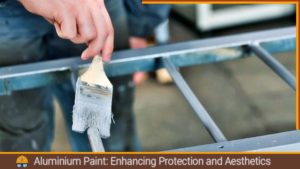There exist many types of cement that are specifically suitable for particular types of work or have distinct concrete applications. For instance, the cement used for aerial structures and underwater structures may differ from one another. Furthermore, the cement that hardens quickly is used in cold weather, or to resist chemical reactions that may vary between applications. Such distinctions in cement performance are achieved by incorporating specific ingredients during the manufacturing process. In this article, we will explore the properties and applications of Portland Pozzolana Cement.
What is Portland Pozzolana Cement?
Portland pozzolana cement is a type of blended cement that is a mixture of Portland cement and pozzolanic materials. Pozzolanic materials are substances that form strong, stable and permanent binders when combined with water and lime. The addition of pozzolanic materials to Portland cement makes the material more durable and resistant to chemical attack, making it popular for construction projects requiring high levels of durability and longevity.
Types of Portland Pozzolana Cement
There are two main types of Portland pozzolan cement:
- Fly ash-based Portland pozzolana cement: This type of Portland pozzolan cement is made by blending Portland cement with fly ash, a byproduct of coal-fired power plants. Fly ash is a pozzolanic material that contributes to the strength and durability of the cement.
- Silica fume-based Portland pozzolana cement: This type of Portland pozzolana cement is made by blending Portland cement with silica fume, a byproduct of the production of silicon metal and ferrosilicon. Silica fume is a highly reactive pozzolanic material that contributes to the strength and durability of the cement.
Both types of Portland pozzolan cement have similar properties, but the choice between the two types will depend on factors such as availability, cost, and desired properties.
Manufacturing of Portland Pozzolana Cement
Portland-pozzolana cement can be produced by either intimately intergrinding Portland cement clinker and fly ash, or by intimately and uniformly blending Portland cement and fine fly ash using an approved blending method and equipment that achieves a complete and intimate blending. If the Portland-pozzolana cement is made by intergrinding Portland cement clinker with fly ash, gypsum (natural or chemical) may be added. The fly ash constituent must be between 10 per cent and 25 per cent by mass of Portland-pozzolana cement. To ensure the homogeneity of the mixture, it must be guaranteed within 3 per cent in the same consignment, and the blending operation must be a properly designed and well-defined unit operation in approved blenders.
Also, read: 10 Types Of Cement
Properity of Portland Pozzolana Cement
The Portland pozzolana cement has the following properties: –
Increased strength and durability:
Pozzolanic materials increase the strength and durability of cement, making it suitable for use in harsh environments and harsh applications.
Improved workability:
The addition of pozzolanic materials improves the workability of cement, making it easier to handle and install.
Reduced permeability:
Portland pozzolana cement is less permeable and more resistant to water and chemical attacks than regular Portland cement.
Also, read: Portland Cement: Properties, Composition, Manufacturing Types and Uses
Lower heat of hydration:
The heat of hydration is the amount of heat generated when cement reacts with water. Adding pozzolanic materials reduces the heat of hydration, making it a safer choice for mass concrete projects.
Reduced carbon footprint:
Pozzolanic materials are often made from waste materials such as fly ash and help reduce the carbon footprint of the cement manufacturing process.
Advantages
- Gains compressive strength with age due to secondary hydration
- Highly resistant to sulphates
- Better workability during the preparation of concrete
- Low heat during setting
- High tensile strength
- Resistant to expansion
Also, read: Comparison Between OPC and PPC Cement: Point of Similarities and Differences
Uses
Portland pozzolana cement can be used for: –
- Construction of Bridges, piers and dams.
- For underground and basement.
- For the construction of underwater structures or Hydraulic structures.
- Canal and Canel Falls.
Also, read: Test For Standard Consistency Of Cement
FAQs
Q: What is Portland Pozzolana Cement?
Ans: PPC is a type of cement made by blending Portland cement and pozzolanic materials, which can include fly ash, volcanic ash, or calcined clay. This results in a more durable and sustainable type of cement that can be used in a wide range of construction projects.
Q: How is PPC manufactured?
Ans: PPC is manufactured by blending Portland cement with pozzolanic materials, which are added during the grinding stage of the cement production process. The resulting blend is then finely ground to produce PPC.
Q: What are the key ingredients for producing Portland Pozzolana cement?
Ans: It is produced by mixing Portland cement and pozzolanic material such as Fly ash or Silica fume.
Q: What are the advantages of using Portland Pozzolana Cement?
Ans: PPC has several advantages over other types of cement, including improved durability, increased resistance to chemical attacks, lower heat of hydration, and reduced environmental impact.
Q: What is the shelf life of PPC?
Ans: PPC has a shelf life of approximately three months from the date of manufacturing. It should be stored in a dry place and protected from moisture to prevent it from setting prematurely.
Q: Is PPC suitable for use in cold weather?
Ans: Yes, PPC is suitable for use in cold weather as it has a lower heat of hydration, which reduces the risk of cracking and damage caused by temperature fluctuations.
References:
- Indian Institute of Technology Kanpur. (n.d.). Portland Pozzolana Cement. Retrieved from http://www.iitk.ac.in/ce/test/Materials/65.html
- Bureau of Indian Standards. (1991). S 1489-1:1991 – Specification for Portland pozzolana cement, Part 1: Fly ash based. New Delhi, India: Author.
- American Concrete Institute. (n.d.). Silica fume. Retrieved February 11, 2023, from https://www.concrete.org/topicsinconcrete/topicdetail/Silica%20Fume?search=Silica%20Fume
![]()







